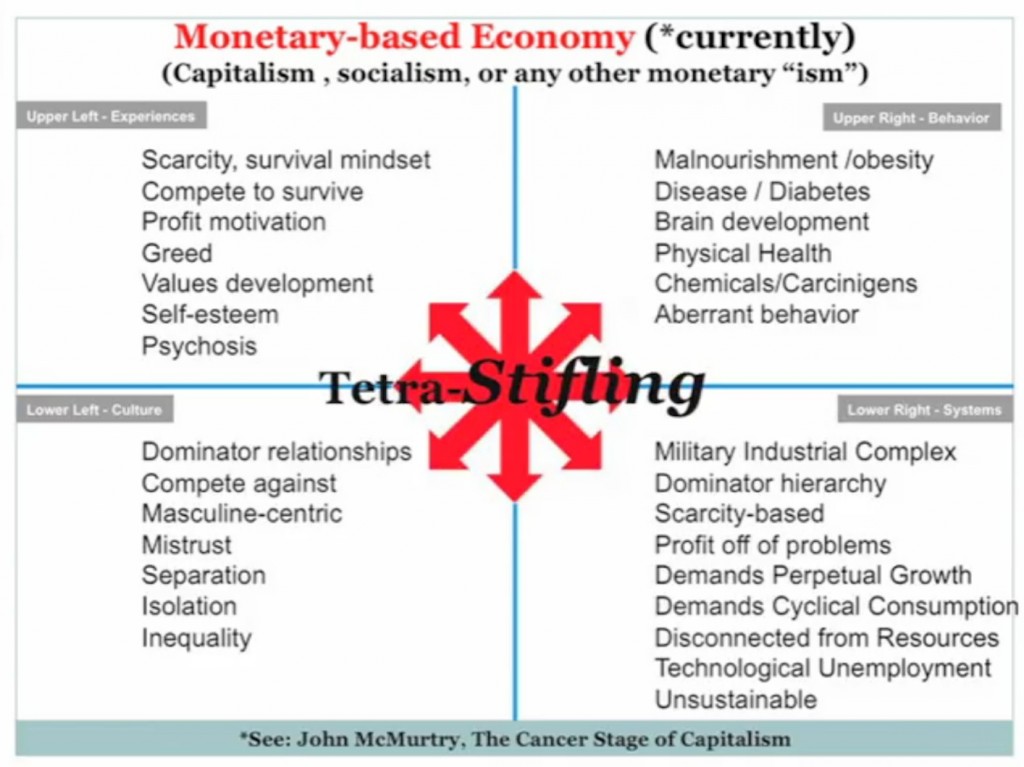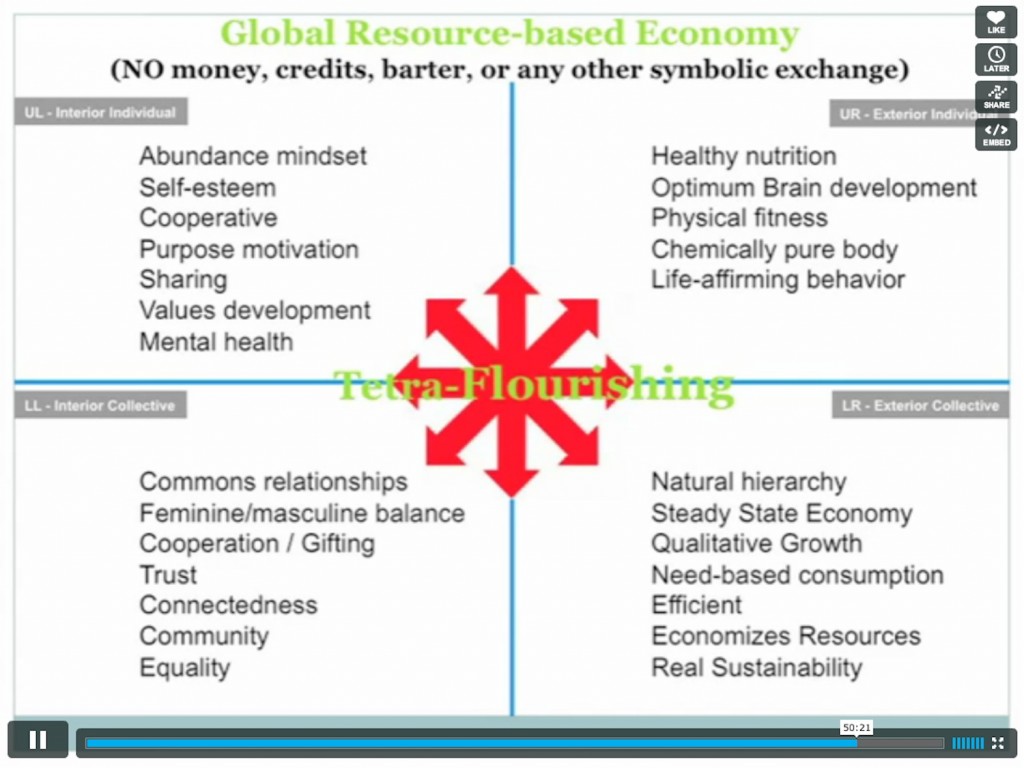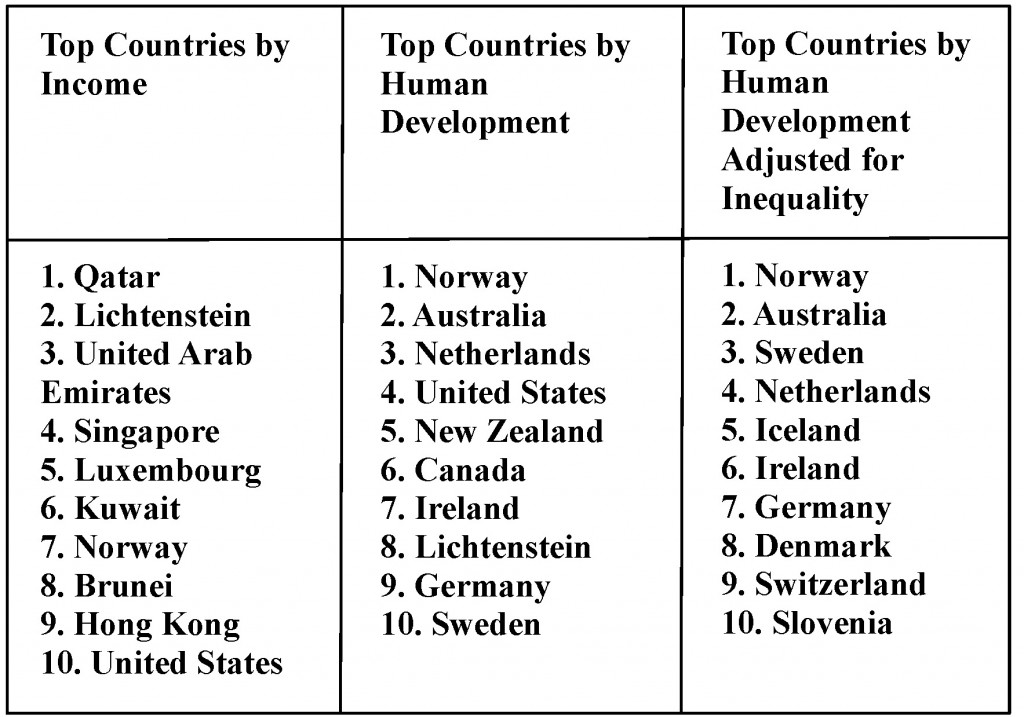[These brief explorations of books, articles and other content are intended to provide a flavor for their contents and an opportunity for me to seek out elements that are tributaries to the integral, developmental, transdisciplinary ocean of thought that I have being critical to our futures. I ask forgiveness if any of my comments seem to convey a lack of respect. To move toward that ocean of thought I hope we can draw on the insights and learning offered by myriads of folk with myriads of mindsets. That is required to heal the spiral, to re-imagine, to reconstruct our roles, our organizations and our planetary crisis so there is a generative future. – Russ]
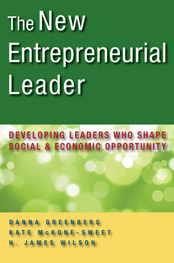 Danna Greenberg, Kate McKone-Sweet, and H. James Wilson and Bobson College Faculty. The New Entrepreneurial Leader: Developing Leaders Who Share Social & Economic Opportunity. San Francisco: Barrett-Koehler, Inc., 2011.
Danna Greenberg, Kate McKone-Sweet, and H. James Wilson and Bobson College Faculty. The New Entrepreneurial Leader: Developing Leaders Who Share Social & Economic Opportunity. San Francisco: Barrett-Koehler, Inc., 2011.
Barrett-Koehler has been my favorite publisher for many years. As an organization development consultant for 22 years I found books by several heroes published by them. They always seemed to be on the leading edge as a publisher of material relevant to my work. As you know, the publishing industry has struggled in the last few years as it learns to integrate ways of working through the internet into its business models. B-K has had its stresses. In recent years – as least to my taste and interests – it seemed they published fewer books that I was delighted to read and use in my work )my work had changed; I no longer consult). There were still some, and some really good ones, like Bill Torbert and Associates, Action Inquiry. But months would go by when it seemed as though their new books were aimed at a more popular audience and less at those who were deeply interested in a subject.
Well, they have made up for the wait for another superb book by offerin to us The NEW Entrepreneurial Leader by Greenberg and friends.
In case you wonder about the selection of books that are reviewed in ILR, I would like to use this opportunity to tell you what I look for: Any evidence that the authors are thinking “integrally.” By that I mean that they are looking at leading, leader roles and leadership through lenses that are developmental, transdisciplinary and/or attend to elements that would be included in Wilber’s or others’ integral frameworks. My belief is that even those authors who haven’t a clue about integral theory or some of our other areas of interest have something of value to add to the development of our thinking about leadership in all of its aspects. I am often disappointed for a number of reasons. For example, while the focus may be on a relevant topic, the lack of articulated awareness of other variables is apparent. This indicates to me a lack of awareness of the scope of variables a more integral approach would attend to, even if pointing out the limitations of one’s work and the implications of excluding hosts of other variables. Another example is the conflation of the myth of the hero with the notion of what it means to lead. For me, this is a severe disservice, whether we are focused on business leaders, community leaders, political leaders or any other domain in which leading is likely to be in evidence.
The conflation of the heroic with leading brings such a focus to an individual who is but one component of a complex system as to be laughable when considered beyond the moment of any heroic act. Sure, sometimes individuals do heroic things, even series of heroic acts. But leadership in a complex system involves so many other factors that to focus on that individual in order to begin to understand the success of a system beyond the leadership event is so reductionist as to be virtually dismissible. Greenberg and friends do not fall into traps such as these – very often
Entrepreurial Leadership is based on extensive international research. It has been constructed around the scaffold of an executive education program on entrepreneurship at Babson College (http://www.babson.edu/enterprise-education-programs/entrepreneurship-program/Pages/default.aspx). Their program description includes
In today’s environment of uncertainty, the world needs entrepreneurial solutions and leaders who create great economic and social value everywhere. Babson has moved entrepreneurship from a discipline to a way of thinking and acting. Babson teaches principles of Entrepreneurial Thought and Action® that can be applied to new ventures, growing companies, family businesses, and large corporations.
The Program focus areas include leadership and eleven other topics.
This book even impressed Noel Tichy, now one of the “grand old men” of organizational development. His statement is so potent, I share it here (an first in book reviews I have done):
The Babson team cracked the code on global entrepreneurial leadership for the 21st century. Their three principles—cognitive ambidexterity, responsibility and sustainability, and self- and social awareness—are the bedrock for winning on the competitive global playing field of tomorrow. A conceptually sound and very practical guidebook for leadership success.
—Noel Tichy, Professor and Director, Global Citizenship Initiative, University of Michigan and coauthor of Judgment
(with Warren Bennis)
Well, he sums it up. And here is what came up for me as I thought of these elements:
- Cognitive ambidexterity: Two things. The first was Joiner and Josephs, Leadership Agility (our first Integral Leadership Book of the Year award winner). They bring a developmental and integrally informed approach to the subject of agility/ambidexterity. The second was the question of lines and stages of development applied to individuals and to their cultural contexts.
- Responsibility and sustainability: So many have worked these. First names to come up were Mark Edwards and Barrett Brown, the former another ILR Integral Leadership Book of the Year award winner—Organisational Transformation and Sustainability, and the second a scholar and development practitioner of integral leadership and sustainability. While I won’t compare their works to the book under review here, I wondered if the authors had any knowledge of their work, but if they do there is no direct evidence of it here.
- Self- and Social awareness: Emotional Intelligence a la Goleman and friends. The HayGroup Emotional Competency Inventory (a 360) based on the work of Goleman and Boyatzis (and Annie McKee?) has four key areas of attention, including these two.
I do not discount this work in any way with these reflections. Rather, I recognize that it has elements highly relevant to an integral exploration.
****************
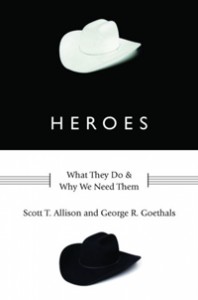 Scott T. Allison and George R. Goethals. Heroes: What They Do & Why We Need Them. Oxford: Oxford University Press, 2011.
Scott T. Allison and George R. Goethals. Heroes: What They Do & Why We Need Them. Oxford: Oxford University Press, 2011.
I have been having a problem with the notion of hero as it is applied to the subject of leadership for a long time. First, it is reductionist. It is reductionist in that we focus energy on an individual for the events of the collective, We reduce out attention on all of the other players essential in leadership occurrences as a result of the seduction of this word and concept. Second, we use the concept to distort the identity of an individual by focusing on a single act or even a series of acts – acts of courage, acts or creativity and innovation, etc. – and rarely look past these (at least in the leadership literature) to see the acts of withdrawing or confusion or failure to reach a goal or level. We don’t see the whole person or the whole life, but label folks as heroes and leave it at that.
Certainly the concept of hero is important. There are myriads of individual and collective acts of heroism in history. My Dad was a hero in World War II when he avoided the Japanese troops on Luzon and went into the mountains to form a major guerrilla army that paved the way for the return of the Americans. MacArthur said, “I shall return.” The title of my Dad’s book is We Remained! I always admired the heroic in my father. And, as his son, I struggled with those things in our relationship that hardly seemed heroic to me. This may say more about me than it does about him, but at least I see more of the whole person
The concept of hero is archetypal. It is a useful notion in that it calls for courage and taking action in times of high risk. But like most of our cultural icons, it is built on shaky ground. Nevertheless, it thrives. Allison and Goethals point this out by drawing many examples of the heroic in Western culture. Rick Blaine in Casablanca who gave up the love of his life to another hero so that both might survive a sure death at the hands of the Germans. Irene Sendler who saved so many Jewish children in the face of Nazi oppression in Poland. And they offer many other examples in movies, sports, explorers, presidents, the business world and even The Little Engine that Could.
They point out that many heroes are also leaders. The relationship between these two concepts in what this book is about. Cleverly, the authors have begun each chapter title with the letters H-E-R-O-E-S. They explore who and what are Heroes; how heroes are Examplars; the role of Redemption in the hero’s journey; he Obstacles faced and overcome in that journey; the moral dimension of the journey as the hero confronts Evil; and how both real and fictional heroes and villains Shape our lives.
I was particularly interested in the latter chapter as a possible reflection of a dialogic and more integral perspective. In keeping with their cultural themes, the authors begin with a question: who is the world’s most powerful man. I won’t divulge the answer, because they take you through at least an amusing process and I wouldn’t want to deprive the reader, What may be even more interesting is the discussion of qualities about this individual: smart, strong (emotionally), caring, selfless, charismatic, reliable and inspiring. Sounds like everyone’s archetype of the benign hero, the benign leader.
They state that heroes “invoke” feelings of inspiration. I found myself questioning the use of terms: invoke or evoke. Here is what the Grammarist (http://www.grammarist.com) has to say on this distinction:
Evoke means (1) to summon or call forth, (2) to call to mind, and (3) to call up a memory from the past. Invoke means, primarily, to call upon, especially in reference to aid, assistance, or a higher power.
In light of this I would suggest that charismatic figures evoke or call forth inspiration in others. That aside, heroes challenge us. They challenge our worldviews, the ways we think, make sense and meaning of our lives and experiences. They do this by offering an alternative lens.
The authors continue by suggesting that leaders and followers are engaged in an exchange of services. And here is where the dialogic bubble gets burst, “[L]eaders provide direction and, in exchange, followers give leaders their focus.” I can accept this as a snapshot view of the leader-follower relationship. And, if you watch the movie of how individuals lead, the leader role expectations of stakeholders and the integral dynamics of culture and systems in co-evolution with individuals, there is a lot more going on. There is not just an exchange dynamic, but there is a meaning and sense making dynamic that involves and impacts leaders and followers so that direction and focus is emergent from that relationship.
The authors do acknowledge a mutuality of influence and their discussion of this is probably worth your while. In fact, calling into focus the dynamics of this mutual influence, this mutual shaping process, is one of the most important contributions of this book. It makes this worth the read if for no other reason that most of us walk around lionizing consciously and unconsciously those who successfully occupy leader roles, at least during some of the time of that occupation. Others resist and challenge, as though ready to do battle with anyone who seeks to fill that role. Here is a book that provides useful reflection on these dynamics.
***************
Troy Wiley, Integral Zeitgeist, http://vimeo.com/31167032 (October 2011).
Here is an hour well spent watching a slide presentation and listening to Troy Wiley lead us through a critique of integral (with love) and reflection on the spiral (with commitment) and a review of the psycho-socio-economic challenge facing the world. He joins with others who have come before him critiquing the “integral movement” for its emphasis on upper left and evolving individual consciousness while offering a more balanced view as demonstrated in these two contrasting slides.
Fundamentally, this is an integrally informed presentation that critiques business-as-usual economics within the mainstream, as well as within the integral movement. Wiley leads us to the growing “Zeitgeist” movement around the world which includes a resource-based economy, as opposed to a monetary economy in which 1% control 40% of the world’s resources. He closes with a prediction that current conditions will lead to the populations of the world bringing the world economy to a halt by occupying everything. Whether that happens or not here you will find a well thought out presentation that may lead you to hoping he is right.
*****************
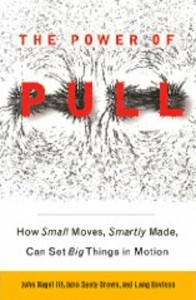 John Hagel III, John Seely Brown, and Lang Davison. The Power of Pull: How Small Moves, Smartly Made, Can Set Big Things in Motion. New York: Basic Books, 2010.
John Hagel III, John Seely Brown, and Lang Davison. The Power of Pull: How Small Moves, Smartly Made, Can Set Big Things in Motion. New York: Basic Books, 2010.
Another book that starts with a question: “[W]hat is it that makes one set of circumstances right for individuals or institutions to flourish while others yield weak or even depreciating results?” Their answer is “Pull” – “the ability to draw out people and resources as needed to address opportunities and challenges.” They continue,
Pull gives us unprecedented access to what we need, when we need it, even if we’re not quite sure what ‘it’ isl. Pull allows us to harness and unleash the forces of attraction, influence, and serendipity. Using pull, we can create the conditions by which individual, teams and even institutions can achieve their potential in less time and with more impact than has ever been possible. The power of pull provides a key to how all of us—individually and collectively—can turn challenge and stress into opportunity and reward as digital technology remakes our lives.
I WANT ME SOME OF THAT!!! And if these authors can provide it or even the path to finding it without too much pain, they will by my heroes! I have reason for hope. Already they have included the individual and the collective domains. Do they see the connection? Whether they do or not they promise the keys to success and add “but it won’t be easy!” Darn!
We must begin with passion and engage in continuous learning about self and context on three levels: access, attract (people and resources) and achieve (through insight and performance). These levels of pull interact with three domains – individual, institutional and societal and three elements of the journey – trajectory, leverage and pace.
As an example of their approach, I focus here on attraction – “techniques for drawing people or resources to us that we were not even aware existed but that prove to be relevant and valuable.” I must admit that my first thought was “The Secret!” Then I thought of a brief flirtation I had with Huna, in this case a Hawaiian spiritual approach that included manifesting what one wants in life. I even – a confession here – took a course on a Huna approach to manifesting wealth. I didn’t get wealthy, so maybe there is a better way and I may have found it here!
The authors state, “[A]ttaction is often the result of something we did, whether consciously or unconsciously. Serendipity can be shaped.”(92) The problem is that these days we don’t know what we need and search engines aren’t going to help much. But it turns out that there are techniques of attraction. These involve increasing the chance of attracting those people and resources we need:
- • Choosing environments that increase our likelihood of encountering people who share our passions
- • Becoming and staying visible to the people who matter most
- • Influencing their endeavors so they amplify our own
- • Discovering and interacting with the right people at the right times (timeliness)
- • Making the most of every serendipitous encounter (relevance) (99)
These seem to me to be very much like the principles of effective networking where the emphasis is being helpful to others so that when they perceive a need related to the support you have given they will think of you, turn to you, refer others to you.
Well, there you have a taste of this book. We would all like to be more attractive of positive stuff in one way or more. Perhaps these guys are onto something.
*****************
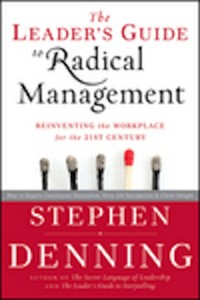 Steven Denning. The Leader’s Guide to Radical Management: Reinventing the Workplace for the 21st Century. San Francisco: Jossey-Bass, 2010.
Steven Denning. The Leader’s Guide to Radical Management: Reinventing the Workplace for the 21st Century. San Francisco: Jossey-Bass, 2010.
Jossey-Bass is another one of my favorite publishers, mostly because one can rely on a high level of quality in the content they publish. In this case they have drawn on a successful author, a master of story telling, to coach us on getting our organizations in shape now and for the future. Like many other authors, Denning has a group of principles (with my translations in parens):
- • Delighting Clients (please the customer)
- • Self-Organizing Teams (be agile in organizing to do that)
- • Client-Driven Iterations (do it over and over again with customer needs in mind)
- • Delivering Value to Clients in Each Iteration (with quality)
- • Radical Transparency (and integrity)
- • Continuous Self-Improvement (while continuously learning about self and system)
- • Interactive Communication (listen and tell your truth clearly)
Then he turns to implementation (making it real). One chapter with a charming title: “A River of Cascading Conversations,” Well, it’s a good read. A tributary to an integral perspective. I will leave you with this definition: “Radical management is about mobilizing the energies, spirit, and ingenuities of workers and focusing them on delighting clients and to go on doing it time after time in a sustainable way.” In other words it is about power holders shaping, guiding and focusing others to do their bidding? No, he continues, “To accomplish that, managers have to abandon their… backroom reengineering and enlist the workers in taking responsibility for cocreating a new, more productive, and more fulfilling future.”
I like the vision.
************************
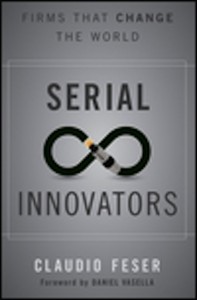 Claudio Feser. Serial Innovators: Firms that Change the World. Hoboken, NJ: John Wiley and Sons, 2011.
Claudio Feser. Serial Innovators: Firms that Change the World. Hoboken, NJ: John Wiley and Sons, 2011.
And doesn’t the world need changing? You bet it does. But it may be that one of the key reasons it needs changing is because of what all those firms did to change it in the first place!
The focus of this book is on keeping large global organizations innovative and adaptive. The assumption is that this would be a good thing for the world – or at least the 1%. The problem is that success has been fragile. “Companies and leaders are inherently exposed to patterns such as overconfidence, denial, or projections.” (ix)
Drawing on academic research and the inevitable fictional success story of we meet an individual identified only as Carl Berger in order to use narrative to foster understanding of the material offered here. However, this does not pretend to be a comprehensive framework (let’s leave our assumptions unexamined – Russ), but it does offer insights and suggestions, even perspectives with the understanding that we are dealing with complex and changing contexts and requirements in building and sustaining businesses.
Interestingly, Feser draws on the idea of corporate life cycles with no mention of the work of Ichak Adizes. Rather, the focus is on research done at the University of Berne where they “hypothesized that firms go through an aging process; that like humans they have a life cycle.” Adizes published his work in 1988! Firms get stuck in this process because of cultural and organizational rigidities.
This reminds me of how Kaiser Permanente in Northern California went through a major restructuring in 1995-96. Whole departments were wiped out, roles redefined, early retirements and opt out packages available to many. It not only shook up the organization and its remaining members, but it had a huge impact on some aspects of its culture. And this was a company that prided itself on its culture and its history. I doubt that the cost to its performance and its profitablity has every been well calculated, but it survived. Has it been supportive of risk taking, innovation and agility? That’s another book. Allow me to return to the one at hand.
Here we are talking about creative destruction and disruptive technologies as an antidote to the aging process. So let’s turn to Feser’s “Secrets of Serial Innovators.” To begin with there are the interventions that slow down the aging process:
- Cultivating the firm’s members’ desire to make a difference.
- Building a team of learners at the top.
- Framing the vision and strategy positively.
- Building on self-managed performance cells.
- Promoting the firm’s members’ drive to perform and grow.
- Investing in capabilities to quickly develop new assets and skills.
- Cultivating a culture that fosters execution and promotes challenge.
We are involved in rebuilding a company at this time, getting it unstuck from a history that has seen some successes, has adhered to a strong set of values, but has grown slowly and not yet become economically viable. As we oriceed, each of these pieces of advice has potential to support our efforts.
Feser’s final chapter is “Legacy through Leadership.” Here acts of human creation are acts of leadership.” As is the norm in so much of the business literature, leadership means those at the top, those in power, those with the illusion of control. This telling paragraph tells most about this perspective:
“If company leaders do not show self-confidence, do not have a positive mindset, and do not role-model resilience, the organization will not develop the confidence to adapt to ever-changing and dynamic markets. If company leaders do not change their behavior when confronted with new situations, the company will run on autopilot. If company leaders do not clearly define the structure of the organization and fight organizational complexity, complexity will creep throughout the organization. If company leaders do not thoughtfully review and reward performance, behaviors fostering collaboration and innovation will become rare and – over time – disappear.” (161)
********************
 Justin Fox. “The Economics of Well-Being,” Harvard Business Review, January-February 2012, 90, 1/2, pp.78-83.
Justin Fox. “The Economics of Well-Being,” Harvard Business Review, January-February 2012, 90, 1/2, pp.78-83.
People have been discussing alternative ways to measure national performance, progress and success for a long time now. Despite the economists who don’t want to see any resources taken away from measuring Gross Domestic Product, this measure has come under increasing fire since it ignores many cost issues, particularly in terms of impact on the quality of life of people, other species, and the planet. In this, “happiness” (HBR finds Seligman) double issue of the Harvard Business Review, Justin Fox provides a brief presentation of the issues and other approaches to measurement.
Essentially, new measurements are proposed for the well being of people and planet. The problem is that while GDP counts locks and jails and ambulances for dealing with highway carnage, according to Bobby Kennedy in 1968, it “does not allow for the health of our children, the quality of their education, or the joy of their play.”
Fox offers these comparisons of national rankings:
Fundamentally, the key question is how and when do we begin to measure and take seriously other factors in assessing the economic progress of a nation, of the world. It will be necessary to have a transdisciplinary notion of economics that is long overdue and probably not on the immediate horizon. In the meanwhile, people profit, people suffer, the planet is in danger.

